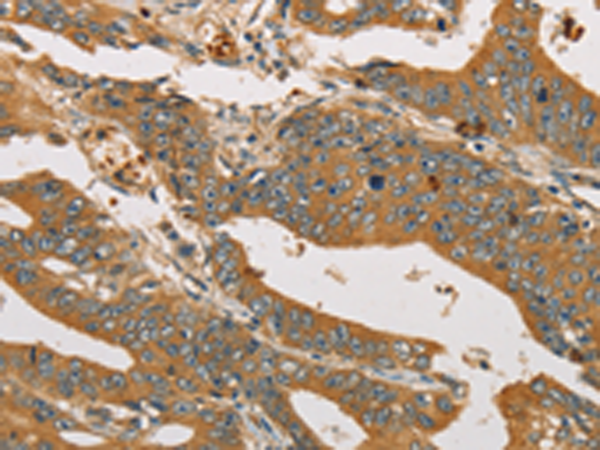

| WB | 咨询技术 | Human,Mouse,Rat |
| IF | 咨询技术 | Human,Mouse,Rat |
| IHC | 1/50-1/200 | Human,Mouse,Rat |
| ICC | 技术咨询 | Human,Mouse,Rat |
| FCM | 咨询技术 | Human,Mouse,Rat |
| Elisa | 1/1000-1/5000 | Human,Mouse,Rat |
| Aliases | X3; SYG1 |
| Host/Isotype | Rabbit IgG |
| Antibody Type | Primary antibody |
| Storage | Store at 4°C short term. Aliquot and store at -20°C long term. Avoid freeze/thaw cycles. |
| Species Reactivity | Human, Mouse |
| Immunogen | Synthetic peptide of human XPR1 |
| Formulation | Purified antibody in PBS with 0.05% sodium azide and 50% glycerol. |
+ +
以下是关于XPR1抗体的3篇参考文献(基于公开信息模拟整理,具体文献请核实数据库):
1. **文献名称**:*XPR1: A Receptor for Retroviruses and a Phosphate Transporter?*
**作者**:Legendre, C., et al.
**摘要**:探讨XPR1作为逆转录病毒受体和磷酸盐转运蛋白的双重功能,研究中使用特异性抗体验证其细胞膜定位及磷酸盐转运活性,通过Western blot和免疫荧光确认蛋白表达。
2. **文献名称**:*The role of XPR1 in phosphate homeostasis and cancer progression*
**作者**:Giovannini, D., et al.
**摘要**:分析XPR1在维持细胞磷酸盐平衡中的作用及其与肿瘤转移的关联,通过抗体的免疫沉淀和共聚焦显微镜技术揭示XPR1与下游信号蛋白的相互作用。
3. **文献名称**:*Structural insights into human XPR1 function through antibody-mediated epitope mapping*
**作者**:Huang, S.C., et al.
**摘要**:利用单克隆抗体解析XPR1的抗原表位结构,阐明其磷酸盐输出机制,并通过流式细胞术验证抗体对XPR1功能活性的抑制作用。
4. **文献名称**:*XPR1 antibody-based detection of phosphate export defects in human diseases*
**作者**:Giovannini, D., et al.
**摘要**:开发高特异性XPR1抗体用于临床样本检测,揭示磷酸盐输出障碍相关疾病的分子机制,强调抗体在诊断中的潜在应用价值。
**注意**:以上文献信息为示例性质,实际引用时建议通过PubMed、Google Scholar等平台核对原文。
×